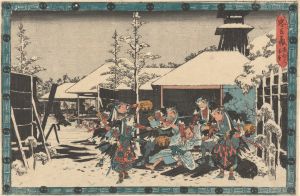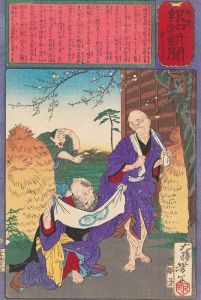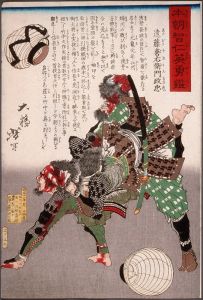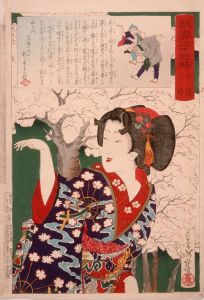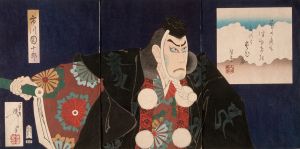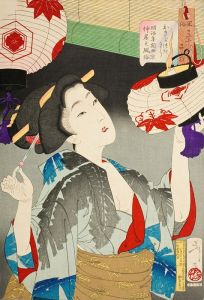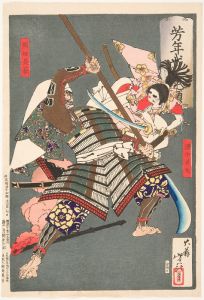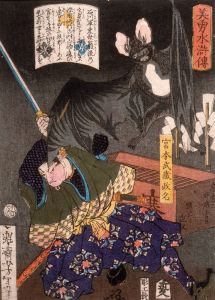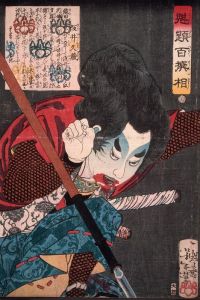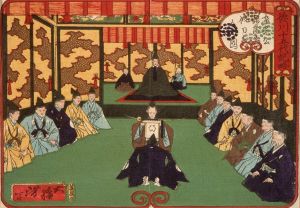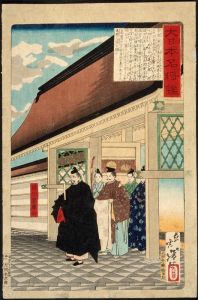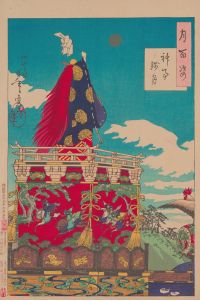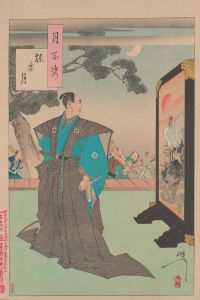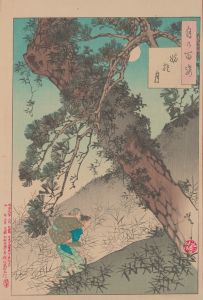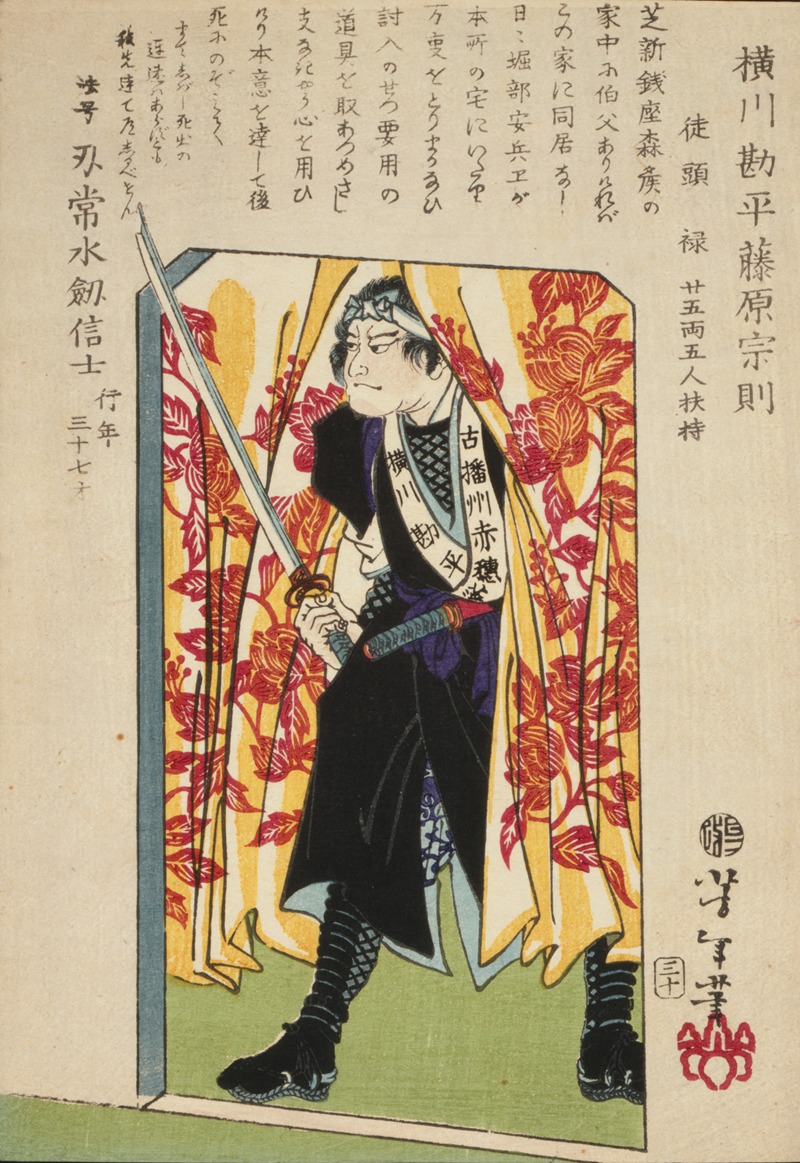
Ronin, or masterless Samurai, in doorway
A hand-painted replica of Tsukioka Yoshitoshi’s masterpiece Ronin, or masterless Samurai, in doorway, meticulously crafted by professional artists to capture the true essence of the original. Each piece is created with museum-quality canvas and rare mineral pigments, carefully painted by experienced artists with delicate brushstrokes and rich, layered colors to perfectly recreate the texture of the original artwork. Unlike machine-printed reproductions, this hand-painted version brings the painting to life, infused with the artist’s emotions and skill in every stroke. Whether for personal collection or home decoration, it instantly elevates the artistic atmosphere of any space.
Tsukioka Yoshitoshi (1839–1892) was a prominent Japanese ukiyo-e artist, renowned for his innovative approach to woodblock printing during the late Edo and early Meiji periods. His works often explored themes of history, folklore, and the supernatural, blending traditional techniques with a modern sensibility. Among his many celebrated prints is "Ronin, or Masterless Samurai, in Doorway," a striking example of his ability to capture emotion and narrative in a single image.
This artwork depicts a lone ronin, or masterless samurai, standing in a doorway. The figure is portrayed with a somber and introspective demeanor, reflecting the social and psychological struggles often associated with the status of a ronin. During the Edo period (1603–1868), samurai who lost their masters due to death or political upheaval were left without a source of income or purpose, leading to a life of uncertainty and, at times, dishonor. Yoshitoshi's depiction of the ronin captures this sense of isolation and resilience, emphasizing the human dimension of a historical archetype.
The composition of the print is notable for its dramatic use of light and shadow, a hallmark of Yoshitoshi's later works. The doorway frames the ronin, creating a sense of confinement and focus while also symbolizing a threshold between two states—perhaps between the past and the future, or between honor and disgrace. The artist's attention to detail is evident in the ronin's attire and weaponry, which are rendered with precision and authenticity, reflecting Yoshitoshi's deep respect for historical accuracy.
"Ronin, or Masterless Samurai, in Doorway" is part of Yoshitoshi's broader exploration of samurai culture and its decline during the Meiji Restoration (1868–1912). As Japan transitioned from a feudal society to a modern nation-state, the samurai class faced obsolescence, and their traditional values were increasingly at odds with the demands of modernization. Yoshitoshi's works often grappled with this tension, offering a poignant commentary on the cultural and social changes of his time.
While specific details about the creation and publication of this particular print are not widely documented, it is consistent with Yoshitoshi's artistic style and thematic interests during the latter part of his career. His ability to convey complex emotions and narratives through woodblock prints has cemented his legacy as one of the last great masters of the ukiyo-e tradition.





